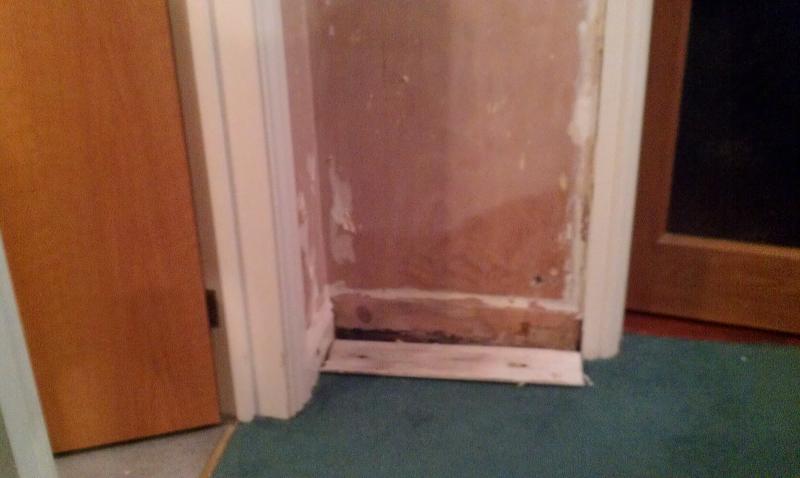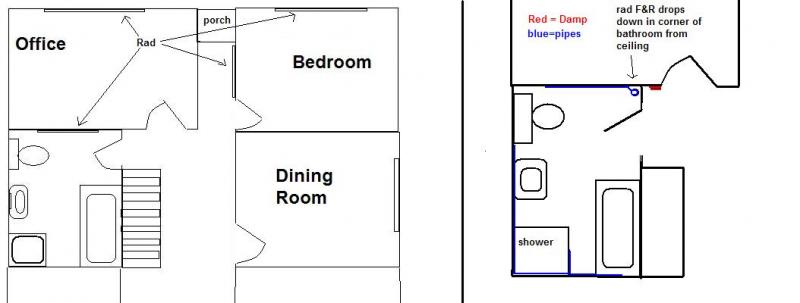1. Is the floor a solid, or a suspended floor?
2. Could you scan a plan diagram of the area showing positions of plumbing fixtures esp. the shower?
3. Are any of the nearby walls stud partitions?
4. On the other side of the stained area wall, is there a radiator in the vicinity?
5. Has any work been carried out recently?
Hi
1. Its solid concrete floor, ground floor
2. Sure thing, attached - hope its detailed enough. Its not to scale but not massively off, should give you an idea. The central heating pipes generally drop down from the ceiling and run alongside the outer walls of the building within the eaves space.
3. No, all solid brick walls downstairs.
4. Yes, to the left in the bathroom, and I originally suspected the CH pipes which drop from the ceiling, but there is no evidence of any leak in the ceiling and no evidence within the bathroom itself, or in the corner of that room. On the outside of the wall where the damp is, the damp is worst along the door frame (see photo) and is actually less bad/nonexistent on the exact opposite side of where the CH pipes are.
5. Nope, no work carried out recently. The fact that the screws in the skirting were rusted suggested to me this is a longstanding issue. I should point out there is damp (which I now suspect to be condensation) at the front of the office and bedroom at the bottom of the bay windows, where the brick wall meets the concrete solid floor. I am convinced this is condensation related as the occurence pattern is odd, and the temp of the concrete floor is very cold right at the edge of the room. Skirtings were rotten there also. No rotten skirtings elsewhere in house or any other evidence of damp.
Thanks, appreciate everyones input.
Oh one other thing, there is a crack in the ceiling above between the office door and the lowest stair rung, I am going to be lifting floor boards near above the damp, but i've had them up before and no evidence of damp or staining.
Cheers
EDIT; both the office and bedroom have a parquet floor. When something is left on the floor for a few days, it takes on a sort of creosote sort of smell - like a preservative. Wondering if its related. Perhaps the floors were treated for damp (though the blocks look original). Those two front rooms have had a chemical damp treatment in the bottom of the walls at some stage too (holes drilled every few cm's).



